Also known as Guinea-Fowl Aloe, Torch Plant, and Lace Aloe, this succulent is an excellent choice for gardeners of all skill levels. Beginner gardeners will be encouraged by its ease of care and its hardiness, while experienced gardeners will relish its symmetrical beauty. No collector of aloe plants will be satisfied until they have obtained an Aloe Aristata.
How to Identify Aloe Aristata
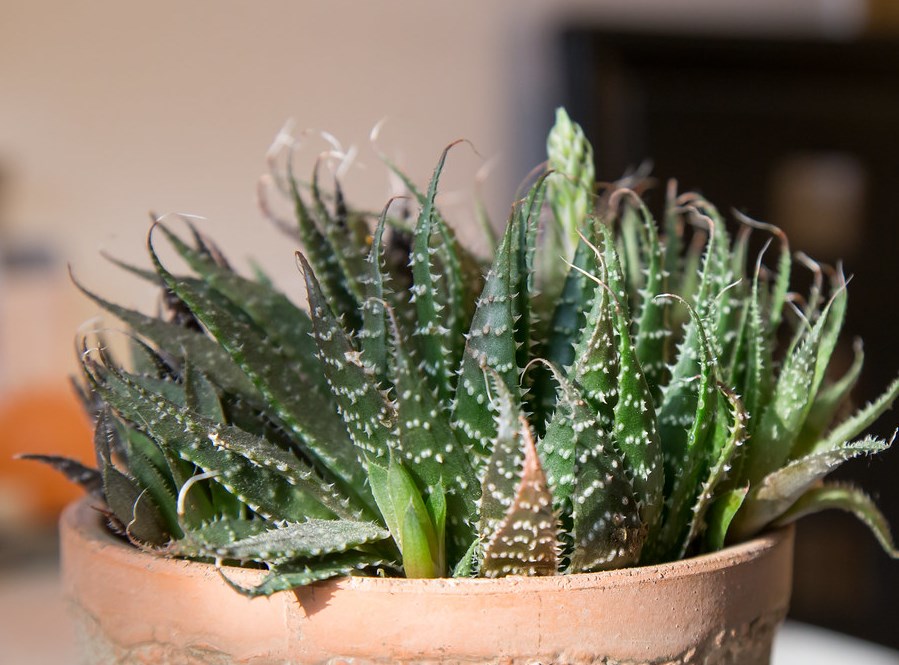
To identify an Aloe Aristata from its many Aloe relatives, simply look for a plant with lance-shaped leaves. These lovely leaves grow with a slightly inward curve, are dotted with creamy-colored spots, and fringed with tiny teeth. The leaves of these plants form tiny rosettes, proving that this is an elegant beauty that all can appreciate.
Where Does Aloe Aristata Grow?
It is no great surprise to learn that Aloe Aristata is a native to the arid zones of South Africa and Lesotho.
Uses of Aloe Aristata
This type of aloe plant is especially great for use in decorative pots and garden beds. Since they reproduce easily by offsets, they will fill a space in no time at all.
How to Grow Aloe Aristata from Seed
While propagating Aloe Aristata from seed is the least common method used, it is still possible, but you must be patient. Aloe plants of all kinds are slow growers at first and their seeds are susceptible to deterioration due to the soil, water, and weather conditions. To have the best chance of growing a healthy Aloe Aristata from seed, follow these steps:
- Select a container with holes for water drainage, or conversely, select a garden plot that allows water to run off easily.
- Select potting soil that is coarse and sandy so that water can easily run through it.
- Fill the container or the garden plot with the potting soil.
- Place the seeds on top of the potting soil.
- Spread a thin layer of the potting soil over the seeds so that they are barely covered.
- Introduce enough water into the soil so that it is moist but not soggy.
- Ensure that the seeds are kept in an area that has temperatures ranging between 68 and 78 degrees Fahrenheit.
*It is recommended that Aloe Aristata seeds be planted and kept indoors until they produce sprouts that are healthy enough to live outside.
Aloe Aristata Growing Conditions

This is a plant that is hardy and unfussy, so the best growing conditions for it are simple to ascertain. It needs plenty of sunlight (full morning sun), heat, and well-draining soil. Besides these three things, it doesn’t need much else, but let’s take some time to look at the best conditions to grow a big, beautiful, and healthy Aloe Aristata plant.
Heat
Since this is succulent, it can endure higher temperatures than many other types of plants.. Typical household temperatures are perfect for growing one of these, but if kept outdoors, it should only be exposed to temperatures above 50 degrees Fahrenheit. Too cool of temperatures will damage or kill the plant.
Sunlight
As a succulent, this plant requires a lot of sunlight to keep it healthy and attractive. Be sure to keep it in full sun for most of the day. If it is kept indoors and optimal amounts of sunlight are not available, use grows lights as a means of compensation.
Water
This is the part of Aloe Aristata’s growing conditions that can impact it the most. As a succulent, this plant is designed to deal with a lack of water. By giving Aloe Aristata too much water, you are risking the chance that its roots will become saturated and develop root rot. This will eventually kill the plant.
To reduce the chance of root rot in any succulents, always water it using the soak and dry method and only water the plant once the soil around it is dry.
When to Plant Aloe Aristata
Figuring out what time of year to plant an Aloe Aristata will be partially determined by which USDA Hardiness Zone it is to be planted in. If you live in Hardiness zone 10a, it is recommended that you plant it in spring or summer; however, if you live in Hardiness zone 10b, it is recommended that you plant sometime between spring and fall.
All other zones from 1a and upward allow for it to be planted year-round. This is primarily because it is better to plant Aloe Aristata indoors until it has grown stable enough to live outside.
How to Plant Aloe Aristata
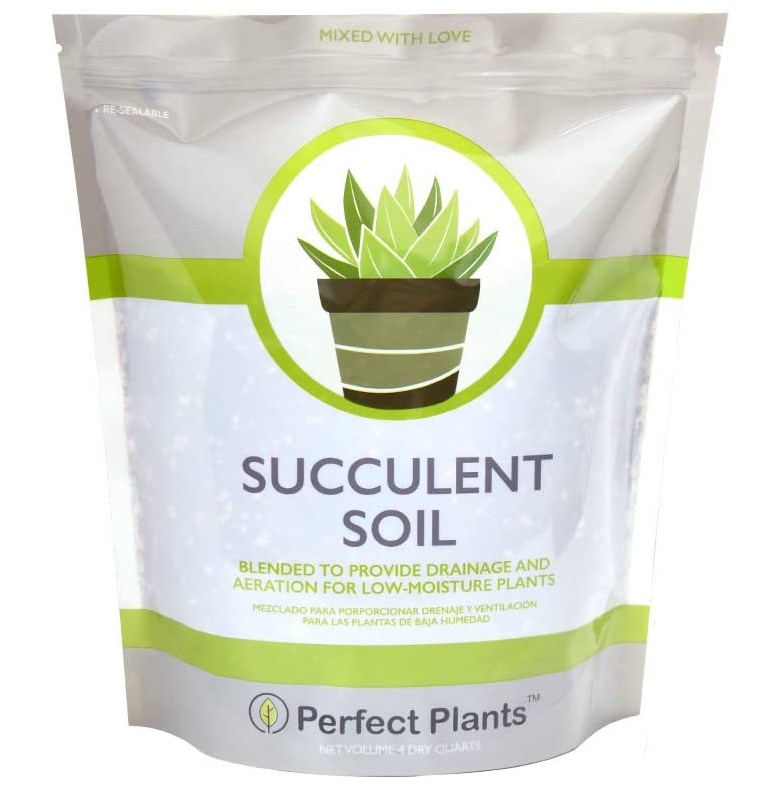
While it is true that these plants are easy to grow and care for, it should not be forgotten that they are easily damaged by too much water. When you do plant an Aloe Aristata, ensure that it is placed in a container with drainage holes and in soil that will drain excess water.
A shallow terracotta planter such as this one will provide enough space for your Aloe Aristata to propagate offsets while providing water drainage and looking stylish. Fill your planter with this soil from the Perfect Plants Store so you will never have to worry about oversaturated roots.
Best Aloe Aristata Fertilizer
It is best to fertilize Aloe Aristata once a year during its growing seasons (typically spring and summer). Use a gentle fertilizer such as this option from Perky Plant.
Best Aloe Aristata Companion Plantings
Since most succulent gardens are built around companionship, consider whether or not you would like to grow a plant friend alongside your Aloe Aristata. A good companion plant will have similar soil, heat, and water requirements. If you think a companion plant for your Aloe Aristata will enrich your succulent garden, I recommend using one of the following options:
Old Man Cactus
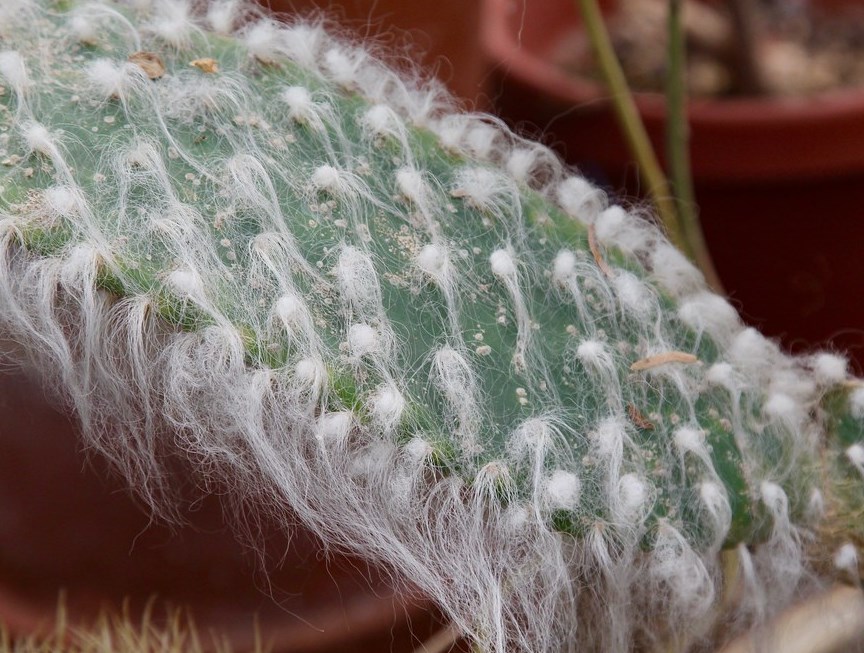
This is a cactus that has a very interesting look. It grows tufts of white hair that resembles either a grandfather’s head or a stereotypical depiction of a wise old man. Old Man Cactus offers succulent gardens a little contrast and character with its unique appearance while still maintaining care compatibility.
Care Tips
- Keep Old Man Cactus in bright and full sunlight (preferably west or south-facing windows indoors)
- Keep Old Man Cactus in warm to hot temperatures (no lower than 65 degrees Fahrenheit)
- Keep Old Man Cactus in soil that drains well
- Fertilize Old Man Cactus once a year during the summer
Pros
- Old Man Cactus can be grown indoors and outdoors (in USDA zones 9 to 11)
- Old Man Cactus doesn’t grow as large when kept in an indoor planter
Cons
- Old Man Cactus can grow up to 40 feet tall when planted outdoors
- Old Man Cactus is not cold hardy
- Old Man Cactus can die from overwatering
- Old Man Cactus is susceptible to infestations of mealybugs and spider mites
- Old Man Cactus is an endangered species
Agave Blue Glow
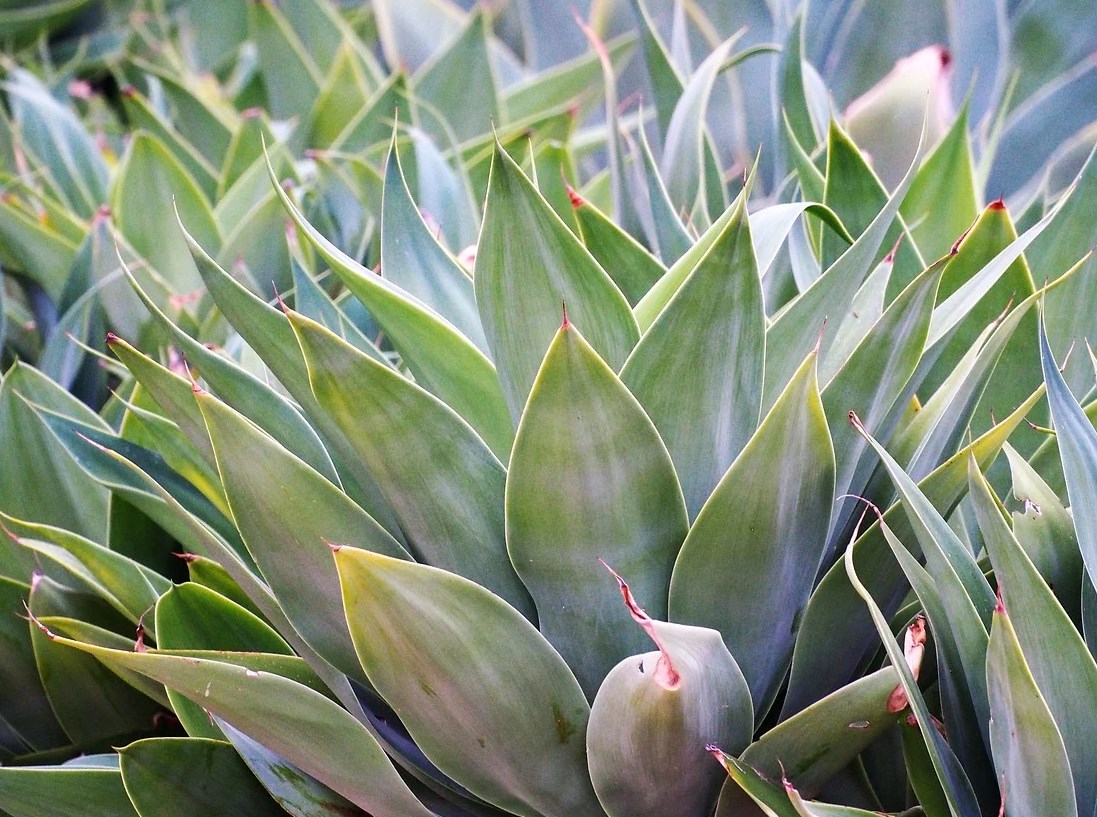
As a hybrid succulent, Agave Blue Glow provides gardeners with the best features of both its parent plants. This is a plant that is nearly disease-free and is highly suitable for enhancing an arid landscape, garden bed, or succulent planter.
Care Tips
- Provide Agave Blue Glow with at least six hours of full sunlight
- Regularly replant Agave Blue Glow (when kept in a container) so that its roots do not become compacted
- Agave Blue Glow can be kept outside in USDA hardiness zones 9a to 11b
Pros
- Agave Blue Glow is a compact plant (grows up to 2 feet tall and 3 feet wide)
- Agave Blue Glow grows spineless leaves
- Agave Blue Glow does not require much care once it is established
Cons
- Agave Blue Glow cannot tolerate temperatures lower than 20 degrees Fahrenheit
- Agave Blue Glow can die from overwatering
- Agave Blue Glow is not self-propagating because it is a hybrid
Aloe Polyphylla
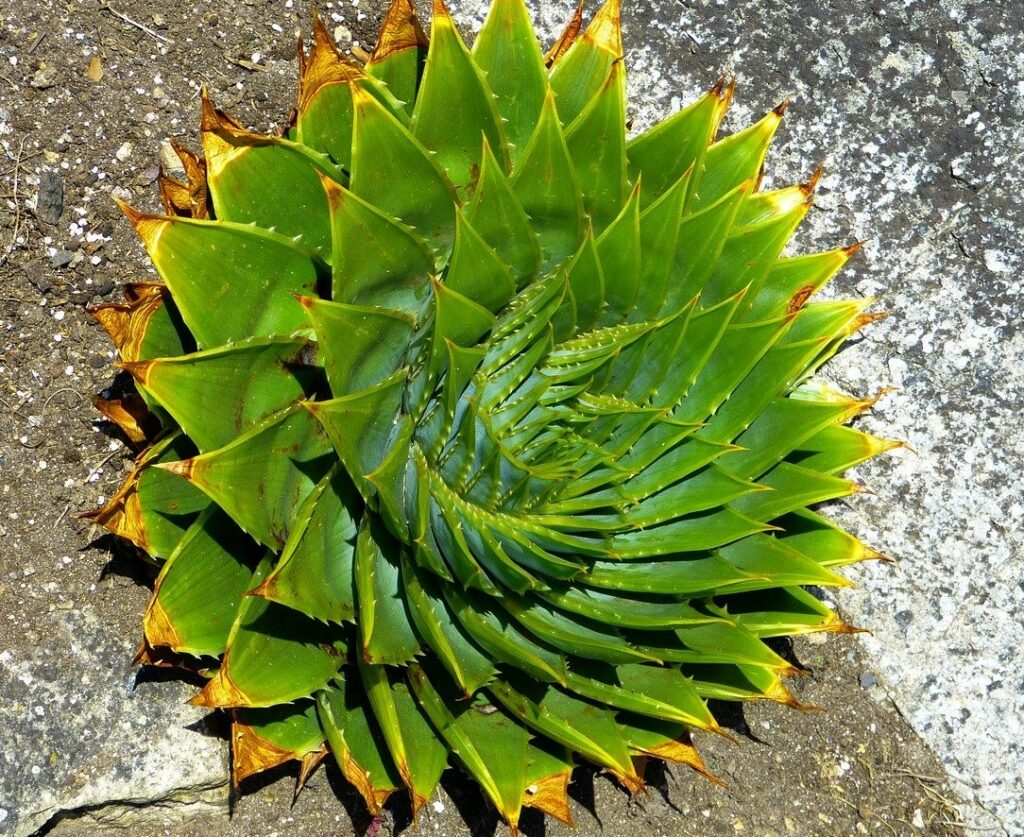
Unique, fascinating, and rare are three words that best describe Aloe Polyphylla. Mesmerizing might be another. This loveliest of succulents grows in a wonderful rosette shape that swirls and whirls around in natural symmetry. If you desire drama and a showy centerpiece for your succulent garden, then look no further.
Care Tips
- Moderately water Aloe Polyphylla during the warm months and even less during the cold months
- Place Aloe Polyphylla in a shaded area that does not get hot
- Fertilize Aloe Polyphylla two to three times during its growing season
Pros
- Aloe Polyphylla requires very little water
- Aloe Polyphylla can be grown indoors
- Aloe Polyphylla produce blooms in spring or early summer
- Aloe Polyphylla can be propagated by offsets
Cons
- Aloe Polyphylla is fussy to care for
- Aloe Polyphylla grows best when planted in an outdoor environment that mimics its native habitat
- Aloe Polyphylla can become unhealthy when exposed to too much water, cold temperatures, or heat
- Aloe Polyphylla is toxic
Aloe Aristata Diseases and Common Problems
While this succulent is nearly free from the threat of disease and pests, there are a couple of things you should be on the lookout for. These two pests are scale insects and mealybugs. Let’s look at each of these in-depth and learn how to rid an Aloe Aristata of them.
Mealybugs
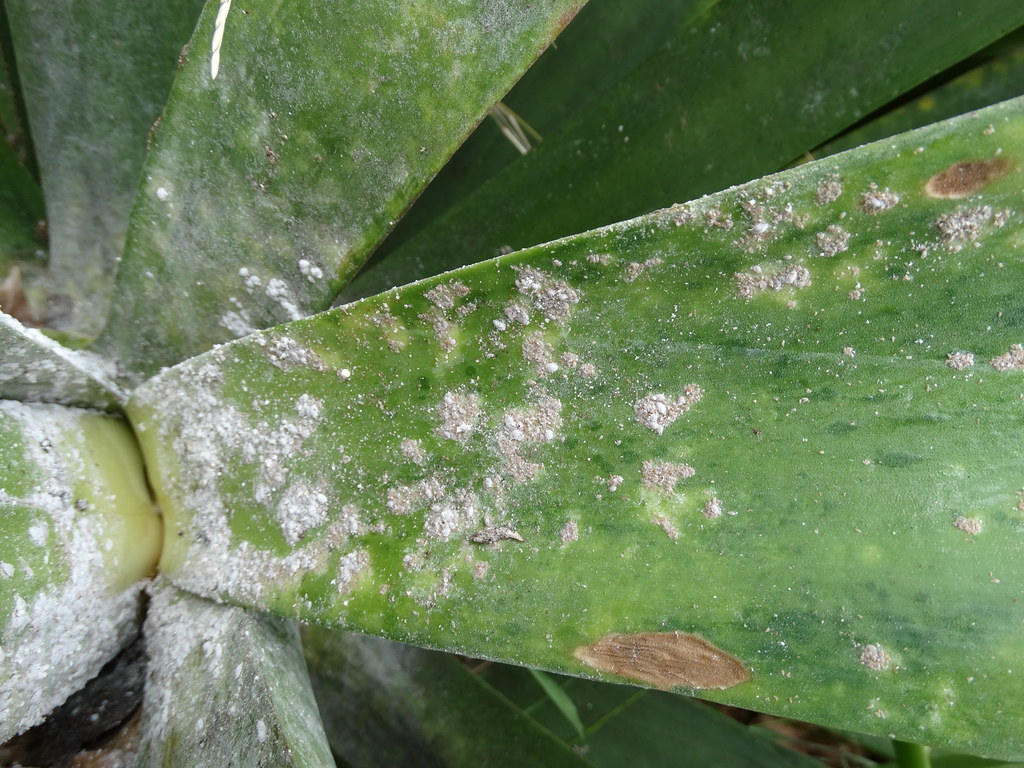
These pests are common in most gardens and are easy to recognize and treat. If you notice small cotton-like spots growing on the leaves and stems of your aloe plant, you are probably facing a mealybug infestation. To treat such an infestation, follow these steps:
- Mix water and alcohol together in a spray bottle and spray the leaves of the aloe plant.
- Use a clean cotton ball to spread the mixture onto the leaves more evenly.
- Apply a coat of either neem oil or insecticidal soap to the plant’s leaves every few days.
Scale Insects
This is another common type of garden pest that is also, fortunately, easy to recognize and treat. If you notice tiny brown bumps on the backsides of the leaves and stems of your aloe plant, you are probably facing an infestation of scale insects. To treat such an infestation, follow these steps:
- Use a hose or a showerhead to spray off the insects.
- Use neem oil and a clean cloth to wipe off the remainder of the insects.
- Regularly apply a coat of neem oil to the plant’s leaves and stems to help prevent future infestations.
Where to Buy Aloe Aristata Seeds Online

Unfortunately, Aloe Aristata seeds are difficult to find online. This is mostly because it is much easier to propagate this succulent via other methods. If, however, you are still interested in growing an Aloe Aristata from the seedling on up, then I recommend that you contact a company that deals in rare seeds. They may be able to help you track down an online seller. Here are a few companies that you may want to reach out to:
Where to Buy Aloe Aristata Plants Online
This succulent is an extremely popular plant online. You can find hundreds of sellers with a simple click of a button; unfortunately, all those options can feel a little overwhelming. So, to help alleviate the feeling of too much information, here are three of my favorite online shops that sell Aloe Aristata:
FAQs
Question: Does Aloe Aristata Produce Blooms?
Answer: Yes, this succulent produces clusters of reddish-orange flowers once a year.
Question: Does Aloe Aristata Attract Animals?
Answer: Yes, many types of birds are attracted to this plant, especially when it is in bloom. Conversely, it is resistant to deer, which keeps it safe from becoming a snack.
Question: Is Aloe Aristata Toxic?
Answer: Yes, the leaves of this plant are toxic. Because of this, it is recommended that it be kept out of reach of animals and small children that might try to consume the plant.
Concluding Words
Aloe Aristata is an attractive choice to include in one’s succulent garden. Whether you are on your first gardening foray or are a highly experienced horticulturalist, this succulent will offer you all you could ever want in a plant. It does not require intrepidity or a college degree in biology to grow it well, but it is in no way boring. Aloe Aristata is a beautiful, unfussy plant and definitely fun to grow.
- Lophocereus Marginatus (Mexican Fence Post Cactus) - January 10, 2022
- Best Cactus Fertilizer Guide - January 9, 2022
- Selenicereus Grandiflorus (Queen of the Night) - January 3, 2022



